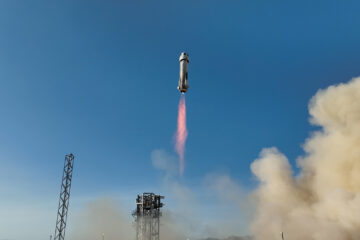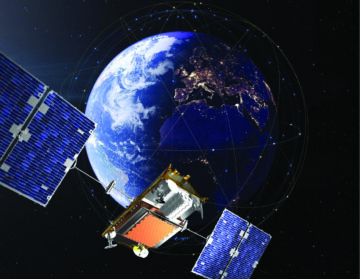Jamming and spoofing attacks on GPS and other global navigation satellite systems (GNSS) are becoming increasingly common as geopolitical crises escalate, creating major challenges and risks for aviation, shipping and other critical services across the world.
Data from GPSJam.org has confirmed widespread GPS/GNSS interference across parts of Europe and beyond as an outcome of the war in Ukraine. Regions affected range from Finland and the Baltics to Poland, Romania and Bulgaria — in addition to the Black Sea, the Caucasus and Turkey. The Middle East is also being affected by interference stemming from Israel and Iran’s hostile activities in the region. Other interference efforts, albeit at a lower scale, are also regularly occurring in areas of Pakistan, India and Myanmar.
This interference can cause significant disruptions to airline take-offs and landings, leading to costly flight delays and flight plan changes. It also presents real risks for certain aircraft and airports. For instance, some airports rely solely on GPS signals for their method of approach —– this is why Russian GPS jamming forced Finnair to suspend flights to Estonia’s Tartu Airport earlier this year. In 2019, a passenger aircraft in Idaho nearly crashed into a mountain due to GPS disruption.
The current surge in interference is largely due to operations by Russia, Israel and Iran. These efforts could persist for some time — and they’re also setting precedents that will last even longer.
New drone warfare tactics perpetuate jamming risks
A key feature in the current conflicts has been the novel use of drone warfare, which is why GNSS jamming operations have been so robust. As this technology becomes more widely available to both state and non-state actors, these tactics are likely to be repeated again and again — wherever conflict emerges.
While the Middle East will likely remain a key hotspot for this activity in the coming years, it is not the only region at risk. Any nation faced with conflict or terrorism could find itself confronted with the asymmetric threat posed by the ability to cheaply disrupt satellite navigations.
The result is that more nations will have to turn to defensive GNSS jamming to ward off these threats, leading to ever larger pockets of unreliable navigation signals that will impact airlines, shipping and more.
Weaponized jamming and spoofing
Countries like Russia, Iran and China are also normalizing the use of weaponized GNSS jamming and spoofing for the purposes of intimidation and harassment.
Russia is by far the most aggressive in using this hybrid warfare strategy, with ongoing interference attacks that reach far outside Ukraine to affect the Baltics, Eastern Europe and the Black Sea region. Other countries are likely to use similar tactics in the future.
But jamming and spoofing aren’t just limited to nation-states. An equally disturbing possibility is the growing threat of electronic terrorism, as smaller groups with low power jammers could potentially carry out more limited attacks in targeted areas.
This risk also affects the U.S. In fact, the U.S. has already had several anomalous and mysterious GPS outage incidents in recent years — including two notable events in 2022 that impacted air traffic in Denver and Dallas. Even a limited GPS disruption attack in a single U.S. city could have a domino effect on air traffic across the country, causing significant economic damage.
GPS is outdated — and that’s a problem
GPS is the world’s oldest satellite navigation system, but this is not exactly an attribute when it comes to security.
The three decade-old system is already outmatched by China’s nearly twice as large BeiDou and Europe’s more modern Galileo satnav systems. Both of these governments continue to invest heavily in their GPS alternatives, including anti-jamming/spoofing technology (such as Galileo’s OSNA protocol) and new forays into low-Earth orbit (LEO) satellite constellations to create stronger, more secure and resilient signals.
Meanwhile, GPS is updating at a much slower pace. The current upgrade to GPS 3 (which offers only modest improvements over GPS 2) is years behind schedule. The next version after this, GPS 3F, won’t be finished for at least another decade. Progress is also slow on the military’s next-gen navigation system, NTS-3. The first NTS-3 test satellite is hoping to launch this year, after repeated delays.
GNSS splintering also increases insecurity
More countries now feel compelled to develop their own satnav capabilities to ensure military and economic independence at a time of increasing geopolitical tensions and shifting global alliances. In addition to Galileo, BeiDou and Russia’s GLONASS, there are several other systems, including India’s NavIC, Japan’s QZSS and South Korea’s KPS. Other countries like the U.K. and Brazil are also considering developing their own systems.
This fragmentation of GNSS has significant geopolitical, commercial and humanitarian consequences. With the decline of shared dependency on any one service (like GPS), all satnav systems will become more vulnerable to interference as well as other cyber and kinetic attacks.
What the U.S. must do
The U.S. government is moving ahead with several efforts to make GPS more resilient to adversarial activity while also developing new non-GPS capabilities. The problem is that these efforts are going to take time.
It will take another 10 years to complete the GPS 3F satellite upgrade. Meanwhile, the government and private sector are pursuing new opportunities with low-Earth orbit position navigation and timing (PNT) satellites that are separate from GPS, but this is also years away from being a viable solution. Similar efforts are also underway with ground-based PNT systems, which include using cell towers to determine location data independently of GPS.
But the U.S. will have to move faster to counter the imminent threat of GPS interference attacks both at home and abroad. This requires a three-pronged approach: detection, localization and mitigation.
We’ve made a good start on GNSS jamming detection, which ranges from the aviation industry’s Automatic Dependent Surveillance–Broadcast system to various other efforts like GNSS Interference Detection and Mitigation Networks, EarthScope Consortium and the UK’s Sentinel Project. However, we still have a ways to go, as the National Space-Based PNT Advisory Board has called for a nationwide monitoring system to be enabled.
Localization is another key issue. The U.S. must be able to pinpoint the exact location of jammers and spoofers in order to accurately gauge the threat, attribute these attacks and engage in more effective countermeasures. Space-based assets that can monitor RF transmissions, like Hawkeye 360 and Spire, have proven to be effective for approximately locating the source of jamming and spoofing. The Air Force Research Lab is also underway with new research efforts, such as using smartphones for real time detection of jamming and spoofing. However, we still lack a holistic and interconnected ability to determine the precise sources of jamming across the globe. This will be a critical component of national security today and in the future.
The U.S. and its allies must also prioritize mitigation and countermeasures. More changes should be made to the International Traffic in Arms Regulations which have limited the development of commercial “controlled reception pattern antennas” that can resist radio jamming and spoofing. The U.S. should also move more quickly to approve Galileo for integration with U.S. aviation systems. Approval of the terrestrial navigation system called eLoran would also provide a useful backup to GPS/GNSS in times of emergency. We must continue to support the development of other alternative PNT technologies to augment and complement GPS, like the new SpaceWERX program by the Air Force and Space Force.
Investing in innovation now to provide alternatives to traditional GPS will be key to securing the future from this growing threat.
Sean Gorman is the CEO and cofounder of Zephr, a developer of next-gen location-based solutions. Gorman has spent more than 20 years as a researcher, entrepreneur, academic and subject matter expert in the field of geospatial data science and its national security implications. He is the former engineering manager for Snap’s Map team, former Chief Strategist for ESRI’s DC Development Center, founder of Pixel8earth, GeoIQ and Timbr.io, and held other senior positions at Maxar and iXOL. Gorman served as a subject matter expert for the DHS Critical Infrastructure Task Force and Homeland Security Advisory Council; he’s briefed the NSA, CIA, DIA, White House, TSA, NGA and the Federal Reserve; and he’s been awarded two DARPA research contracts. He is also a former research professor at George Mason University.
- SEO Powered Content & PR Distribution. Get Amplified Today.
- PlatoData.Network Vertical Generative Ai. Empower Yourself. Access Here.
- PlatoAiStream. Web3 Intelligence. Knowledge Amplified. Access Here.
- PlatoESG. Carbon, CleanTech, Energy, Environment, Solar, Waste Management. Access Here.
- PlatoHealth. Biotech and Clinical Trials Intelligence. Access Here.
- Source: https://spacenews.com/global-navigation-jamming-will-only-get-worse-us-needs-move-fast/
- :has
- :is
- :not
- 1
- 10
- 12
- 13
- 17
- 19
- 2%
- 20
- 20 years
- 2019
- 2022
- 24
- 300
- 360
- 41
- 46
- 5
- 50
- 6
- a
- ability
- Able
- abroad
- academic
- accurately
- across
- activities
- activity
- actors
- addition
- adversarial
- advisory
- advisory board
- affect
- affected
- affects
- After
- again
- AIR
- Air Force
- air force research lab
- aircraft
- airline
- Airlines
- airport
- Airports
- albeit
- Alert
- All
- Alliances
- already
- also
- alternative
- alternatives
- an
- and
- Another
- any
- approach
- approval
- approve
- approximately
- ARE
- areas
- arms
- AS
- Assets
- At
- attack
- Attacks
- augment
- Automatic
- available
- aviation
- awarded
- away
- Backup
- Baltics
- BE
- become
- becomes
- becoming
- been
- behind
- being
- Beyond
- Black
- board
- both
- Brazil
- Bulgaria
- but
- button
- by
- called
- CAN
- capabilities
- carry
- Cause
- causing
- cell
- Center
- ceo
- certain
- CFM
- challenges
- Changes
- cheaply
- chief
- China
- Chinas
- cia
- City
- Close
- cofounder
- comes
- coming
- coming years
- commercial
- Common
- compelled
- Complement
- complete
- component
- CONFIRMED
- conflict
- conflicts
- Consequences
- considering
- consortium
- continue
- contracts
- costly
- could
- couldn
- Council
- Counter
- countries
- country
- create
- Creating
- crises
- critical
- Critical Infrastructure
- Current
- cyber
- damage
- darpa
- data
- data science
- day
- dc
- decade
- Decline
- Defense
- defensive
- delays
- Dependency
- dependent
- Detection
- Determine
- develop
- Developer
- developing
- Development
- DHS
- dia
- Disrupt
- Disruption
- disruptions
- domino
- drone
- due
- Earlier
- East
- eastern
- eastern europe
- Economic
- economic damage
- effect
- Effective
- efforts
- Electronic
- emergency
- emerges
- enabled
- engage
- Engineering
- ensure
- Entrepreneur
- equally
- error
- ESA
- escalate
- Ether (ETH)
- Europe
- Europes
- Even
- EVER
- exact
- exactly
- expert
- faced
- fact
- false
- far
- FAST
- faster
- Feature
- Federal
- federal reserve
- feel
- field
- Find
- finished
- Finland
- flight
- For
- Force
- forced
- Former
- founder
- fragmentation
- from
- future
- gauge
- geopolitical
- George
- get
- Global
- globe
- Go
- going
- good
- Government
- Governments
- gps
- Growing
- harassment
- Have
- he
- heavily
- Held
- Hidden
- holistic
- Home
- homeland
- Homeland Security
- hoping
- hostile
- Hotspot
- House
- However
- http
- HTTPS
- Humanitarian
- Hybrid
- Impact
- impacted
- implications
- improvements
- in
- incidents
- include
- Including
- Increases
- increasing
- increasingly
- independence
- independently
- india
- industry’s
- Infrastructure
- Innovation
- instance
- integration
- interconnected
- interference
- International
- into
- Invest
- Iran
- Israel
- issue
- IT
- ITS
- itself
- Japan’s
- journalist
- just
- Key
- Korea’s
- lab
- Lack
- landings
- large
- largely
- larger
- Last
- latest
- launch
- leading
- least
- LEO
- like
- likely
- Limited
- List
- Localization
- locating
- location
- Location-Based
- longer
- lower
- made
- major
- make
- manager
- map
- Mason
- Matter
- max-width
- Meanwhile
- method
- Middle
- Middle East
- Military
- mitigation
- Modern
- modest
- Monitor
- monitoring
- more
- most
- Mountain
- move
- much
- must
- Myanmar
- mysterious
- nation
- National
- national security
- Nations
- Nationwide
- Navigation
- nearly
- needs
- networks
- New
- Newsletter
- next
- novel
- now
- nsa
- occurring
- of
- off
- Offers
- oldest
- on
- ONE
- ongoing
- only
- Operations
- opportunities
- or
- Orbit
- order
- Other
- our
- out
- outage
- Outcome
- outdated
- outside
- over
- own
- Pace
- page
- Pakistan
- parts
- Pattern
- perpetuate
- plan
- plato
- Plato Data Intelligence
- PlatoData
- please
- pockets
- Poland
- pop-up
- posed
- position
- positions
- possibility
- potentially
- power
- precise
- presents
- Prioritize
- private
- private sector
- Problem
- process
- Professor
- Program
- Progress
- project
- proven
- provide
- publish
- purposes
- pursuing
- quickly
- Radio
- range
- ranges
- RE
- reach
- real
- real-time
- recent
- reception
- region
- regions
- regularly
- regulations
- rely
- remain
- repeated
- requires
- research
- researcher
- Reserve
- resilient
- resist
- result
- Risk
- risks
- robust
- Romania
- Russia
- russian
- s
- satellite
- satellites
- Scale
- schedule
- Science
- SEA
- sector
- secure
- securing
- security
- senior
- separate
- served
- service
- Services
- setting
- several
- shared
- SHIFTING
- Shipping
- should
- signals
- significant
- similar
- single
- slow
- slower
- So
- solely
- solution
- Solutions
- some
- Source
- Sources
- South
- Space
- Space Force
- space-based
- spent
- start
- State
- Status
- Still
- Strategist
- Strategy
- stronger
- subject
- subscription
- such
- support
- surge
- Suspend
- system
- Systems
- T
- tactics
- Take
- targeted
- Task
- task force
- team
- Technologies
- Technology
- tensions
- terrestrial
- Terrorism
- test
- than
- that
- The
- The Future
- The Source
- the world
- their
- There.
- These
- this
- this year
- threat
- threats
- three
- time
- times
- timing
- to
- today
- traditional
- traffic
- true
- try
- Tuesday
- Turkey
- TURN
- Twice
- two
- U.K.
- u.s.
- U.S. government
- Ukraine
- Underway
- university
- updating
- upgrade
- use
- useful
- using
- various
- version
- veteran
- viable
- Vulnerable
- war
- War in Ukraine
- was
- ways
- we
- WELL
- when
- wherever
- which
- while
- white
- White House
- why
- widely
- widespread
- will
- with
- world
- world’s
- worse
- would
- year
- years
- you
- Your
- zephyrnet










